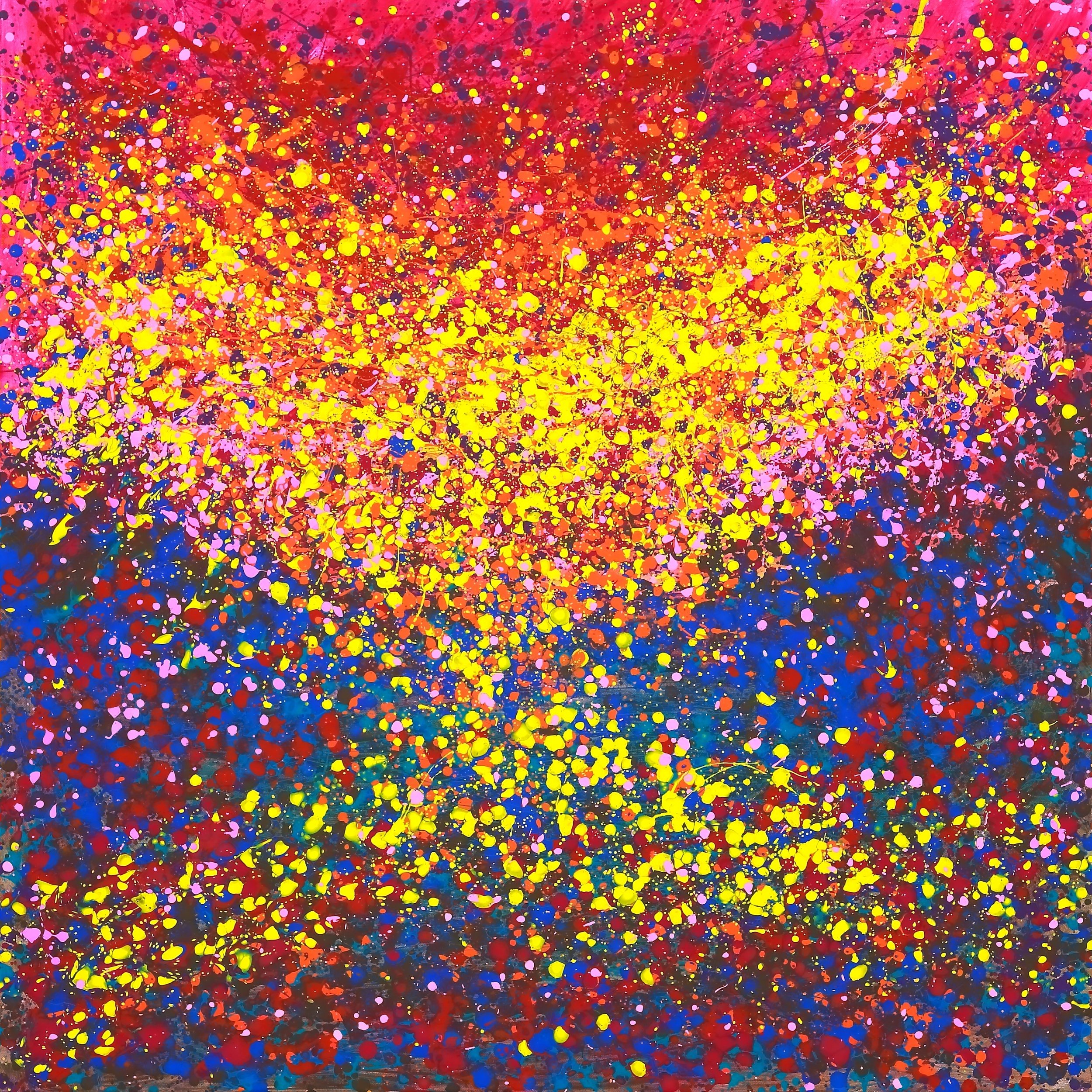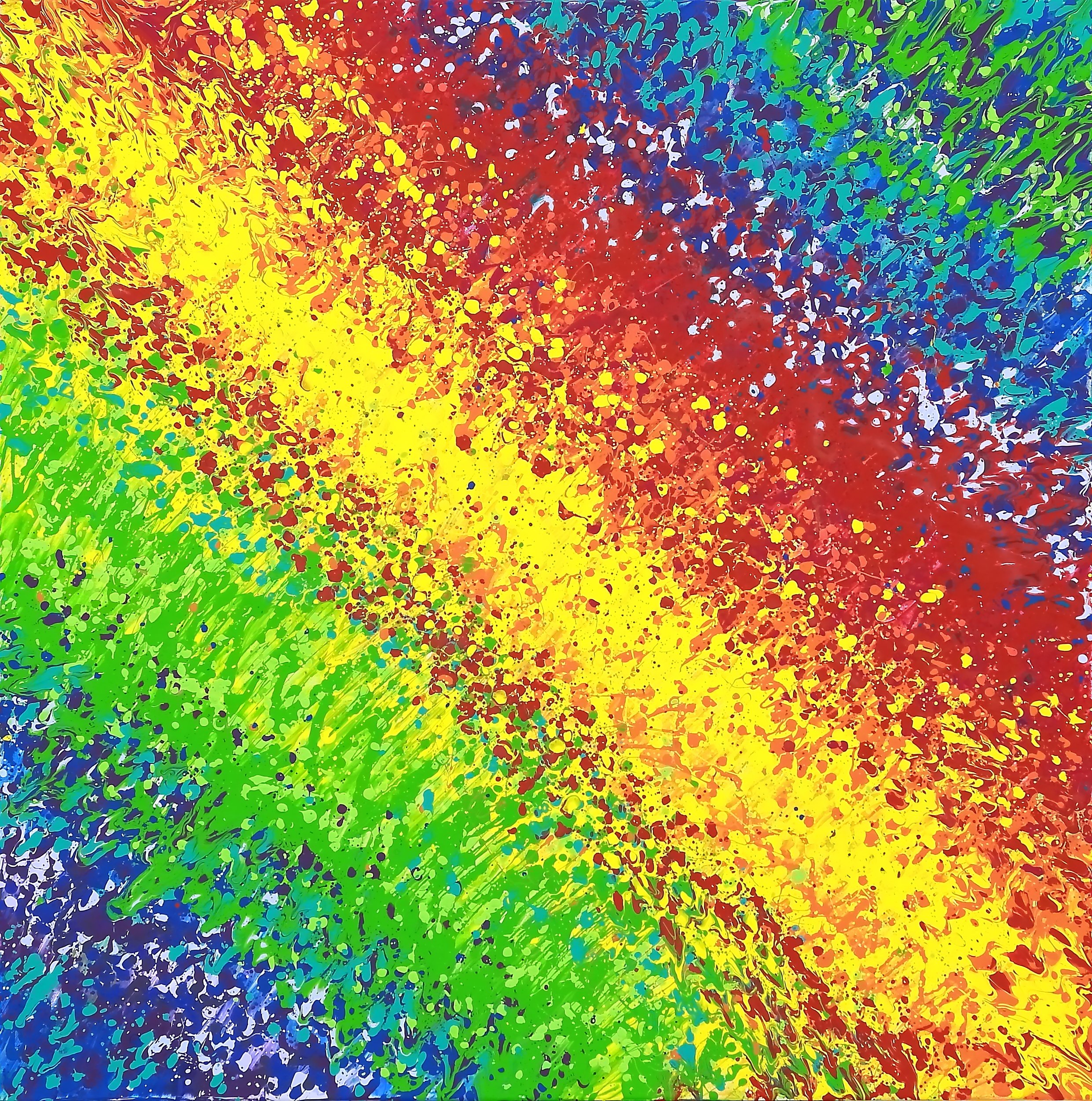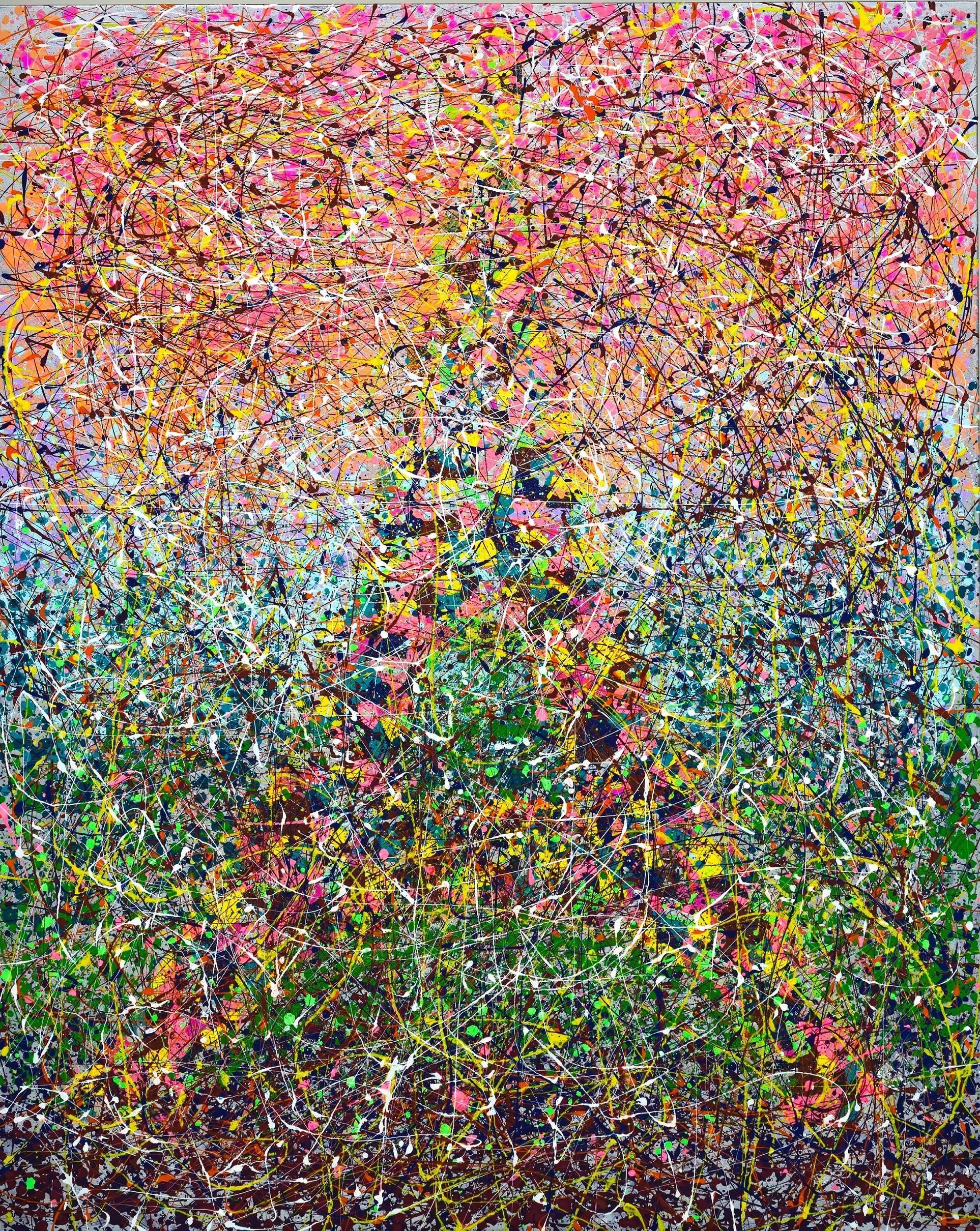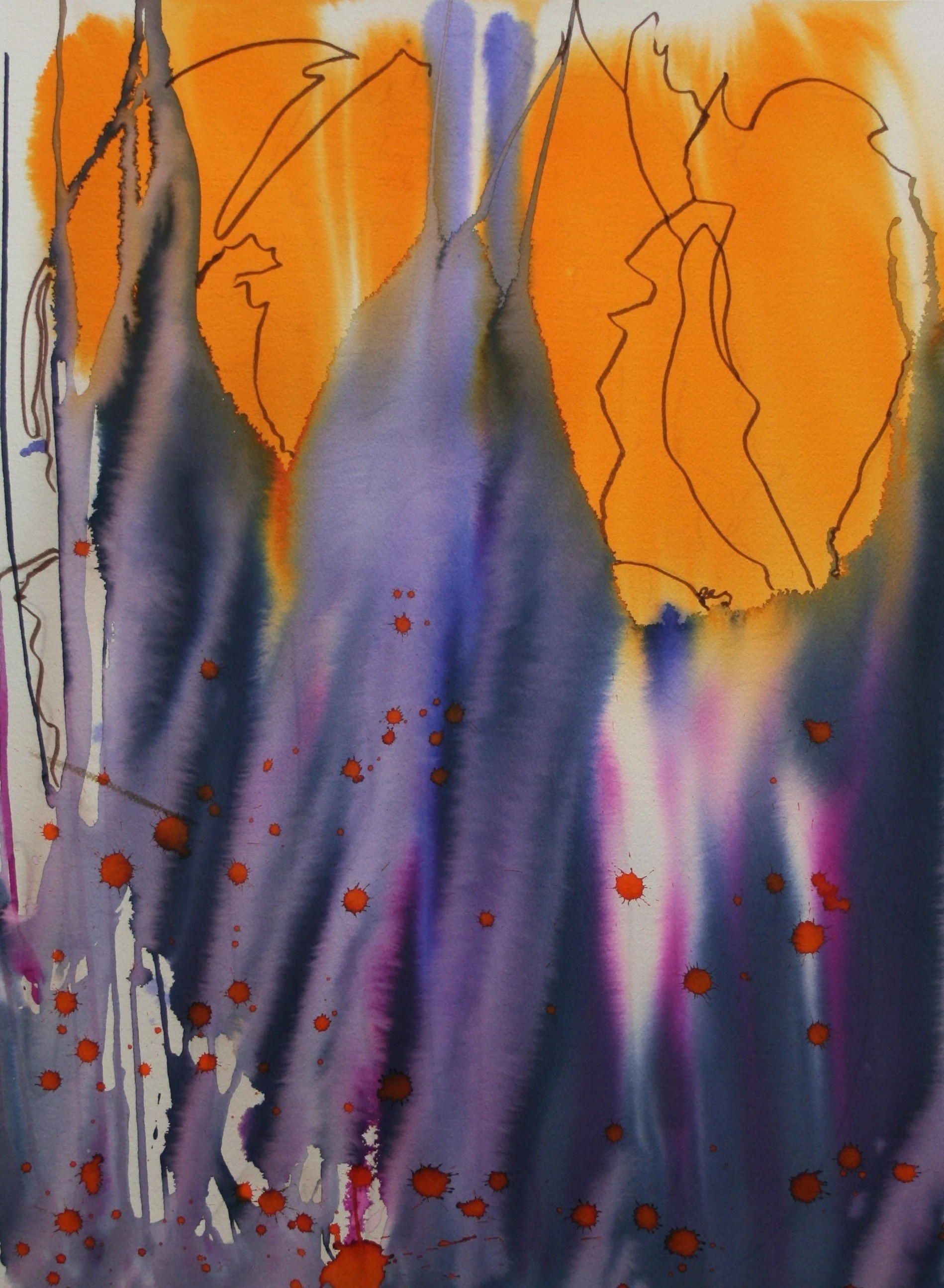Interview with Dr. Lowly
Dr Lowly’s (Low Lee Yong) artistic journey is a unique tapestry woven from diverse life experiences. While medicine and healthcare technology were his initial pursuits, a deep passion for art ultimately led him to fully embrace this creative path.
His prior experiences as a doctor, motivational speaker, author and health technology entrepreneur, spanning over two and a half decades, have profoundly shaped his artistic practice. Dr. Lowly brings strategic thinking, a spirit of innovation, and a keen understanding of human connection to his art. This unique blend allows him to approach each creation with focus and a sense of adventure.
Dr. Lowly’s story extends far beyond the canvas. It is a captivating blend of art, medicine, and entrepreneurial spirit, further enriched by his dedication to philanthropic endeavors.
Journey from Medicine and Health-tech to Art
I’m Dr. Lowly, also known as Low Lee Yong, an autodidactic abstract artist whose work is deeply rooted in my background in medicine and technology. Growing up in Singapore, art was always my first love. I showcased my talent early on, winning an art contest at eight and becoming an active member of my school’s Art Club. Yet, financial constraints redirected my path to a career in medicine, where I devoted myself to helping others as a doctor.
Even as I immersed myself in the medical field, my curiosity for technology never waned. I taught myself about information technology and built a network of 2,000 clinics across Singapore over 25 years. While my business and professional life was thriving, my passion for art remained a constant undercurrent.
When I finally sold my health technology business in 2019, I saw it as an opportunity to dive into art full-time. The pandemic of 2020 became a pivotal moment for me. Stuck at home, I rediscovered my love for art, particularly abstract art, which offered a therapeutic escape and a new form of expression. This shift from the precise worlds of medicine and tech to the freeform realm of abstract art was both thrilling and transformative.
My artistic journey led me to develop a unique “squeeze and splatter” technique. After many experiments with different tools—ranging from traditional brushes and palettes to unconventional items like balloons, spoons, and even a toilet brush — I found a style that feels distinctly my own. My medical background influenced my choice of acrylic paint, prized for its non-toxic properties, reflecting my commitment to health.
My art celebrates the fleeting beauty of nature and the resilience of the human spirit. Inspired by the natural world, my paintings aim to capture ephemeral moments, evoking a sense of wonder and optimism. I also integrate my commitment to giving back through my support of Goducate, an NGO focused on building shelters and empowering marginalized communities, creating a powerful synergy between my artistic practice and philanthropic efforts.
Each piece I create is a vibrant expression of energy, blending spontaneity with intention. As I continue to explore new artistic avenues, my work remains a testament to perseverance, innovation, and the pursuit of beauty. I invite you to join me on a visual and emotional journey through my art, to see the world with optimism, and to find inspiration in the unexpected. My art is a reminder that even in challenging times, the human spirit can create beauty and hope.
Dr. Lowly, your transition from a successful career in health technology business to the world of abstract art is both fascinating and unconventional. How have your years in healthcare technology entrepreneurship influenced not just the themes but also the emotional depth and healing aspects of your artwork? Can you share how this background helps you connect with your audience on a deeper emotional level?
My journey from health technology entrepreneurship to abstract art has been both challenging and rewarding, yet the core of my work remains the same: creating meaningful connections that can foster healing. In the health tech field, I was driven by a vision to bridge people with solutions that improved their well-being. This experience taught me about the essential role of empathy, innovation, and resilience in addressing complex human needs, and these values now deeply influence my art.
Through my artwork, I aim to capture the spectrum of human emotion—vulnerability, resilience, and interconnectedness—which are reflections of what I once worked to achieve through technology. Each piece invites viewers to explore their inner landscapes, providing a safe space for introspection and emotional release. My background in healthcare technology has given me a unique perspective on art as a tool for connection and healing, much like the tools I once developed to support physical health.
Ultimately, I see my art as an opportunity to create moments of solace and self-discovery, where viewers can experience the transformative potential of art. I hope that my work resonates on an emotional level, inviting people to find comfort, reflection, and even healing, much like the innovations I once pursued in health technology.
Your signature "squeeze and splatter" technique has become a hallmark of your artistic identity. Could you walk us through the evolution of this technique and discuss how it reflects your personal and professional metamorphoses—from the precision of medicine to the expansiveness of art? What does this technique allow you to express that more traditional methods do not?
"Vincent van Gogh once said, 'Normality is a paved road: it’s comfortable to walk but no flowers grow.' This resonates deeply with my journey from medicine to art. The shift from the structured precision of healthcare to the liberating world of abstract art felt like stepping off that paved road and exploring uncharted territory.
I first experimented with unconventional tools like balloons, plastic sheets, and even a toilet brush, seeking a way to let paint flow freely without losing its vibrancy. My aim was to bring out the natural energy and intensity of each color. The breakthrough came when I embraced a 'squeeze and splatter' approach, using direct, instinctive gestures that allow paint to land on the canvas with energy and unpredictability. This method enables the paint to speak for itself, capturing movement, spontaneity, and raw expression that traditional brushes often restrict.
Just as medicine requires exploring new treatments to achieve breakthroughs, my art evolves by breaking conventional techniques and embracing the unexpected. Through 'squeeze and splatter,' I’ve found a medium that reflects my journey—a leap from the carefully paved roads of medicine into the wild, vibrant possibilities of creativity. This technique allows me to express joy, vitality, and freedom on a level that traditional methods could never capture, and for me, each piece is a testament to the beauty that grows when we venture beyond the ordinary."
You've cited Vincent van Gogh and Jackson Pollock among your influences, artists known for their revolutionary approaches to form and color. How do you draw from their legacies in your own work while pushing boundaries to forge a distinct style that speaks to contemporary issues and personal narratives?
Van Gogh's vibrant colors and abstract emotions, and Pollock's energetic action shape my work. By blending their influences through my "squeeze and splatter" technique, I evoke their emotional depth and dynamic motion, creating pieces that are both joyful and vibrant. Though I don't use a brush, I embrace a controlled yet spontaneous splatter of paint to convey contemporary issues and personal narratives.
With your extensive involvement in philanthropic activities, particularly through Goducate, how do you integrate your artistic work with your philanthropic endeavors? Could you share an instance where art directly contributed to your mission of empowerment and resilience, perhaps influencing a community or individual in a profound way?
Goducate has traditionally supported the needy through various livelihood projects like farming, sewing, and music education for young children with musical talent. I aimed to launch an art academy in Laguna, Philippines, in May 2024. However, due to a severe heat wave, the trip was canceled. Witnessing the community's struggle, I realized they urgently needed solar panels to cool their homes. I decided to sponsor the installation of solar panels, postponing the art project until a more opportune time arises. This instance highlighted how my work can adapt to meet immediate needs, reinforcing empowerment and resilience in the community.
As a contemporary artist based in Singapore, how do you balance the rich heritage of Asian artistic traditions with the global language of abstract art? Are there specific elements from your Singaporean background that persist or resonate uniquely in your artwork?
The art scene in Singapore is deeply rooted in Asian traditions, with a strong presence of calligraphy, Chinese paintings, and depictions of local scenes like the Singapore River and shophouses. As a contemporary artist, my preference leans towards abstract art with an international flair. However, I skillfully integrate elements from my Singaporean background into my work. For instance, I often depict the stunning Singapore sunset and iconic landmarks like the Merlion in my abstract paintings, which are exhibited on an international stage. This blend of local heritage and global abstraction creates a unique resonance in my artwork, bridging traditional and contemporary art forms.
Your art embodies themes of ephemeral beauty and enduring hope—concepts that often find themselves at odds. How do you navigate these contrasting themes in your creative process, and what techniques do you use to visualize such abstract concepts into tangible art forms?
Navigating themes of ephemeral beauty and enduring hope in my art mirrors the use of contrasting colors in a rich narrative. My squeeze and splatter technique allows me to blend contrasting colors without losing their vibrancy, capturing fleeting moments like a sunset, while imbuing them with a sense of enduring hope. This approach brings to life the beauty of transient scenes and conveys the promise of a brighter tomorrow, even as the day fades into darkness. This interplay of contrasts forms the essence of my artistic expression, making abstract concepts tangible.
Exhibiting internationally offers opportunities and challenges in how art is perceived across different cultural contexts. Can you discuss a particularly memorable response to your work from abroad and what it taught you about the universality or particularity of aesthetic appreciation?
Exhibiting my work internationally has been a journey of both opportunity and challenge. While I was in Beijing preparing for a solo exhibition, I met two middle-aged emerging artists at their group exhibition in a gallery. They struggled with painting small pieces, and I challenged them to try larger canvases to better enjoy the process of painting.
Through this shared experience, we formed a bond of friendship. Our common language of artistic expression transcended language barriers and cultural differences, highlighting the universality of aesthetic appreciation and the profound connections that art can foster. This experience taught me that while the technical aspects of art can be challenging, the emotional and creative connections it builds are truly universal.
Looking forward, you've expressed interest in incorporating cutting-edge technologies like 3D holograms into your artwork. What new dimensions do you hope these technologies will bring to your artistic expression, and how do you foresee them enhancing the sensory experience of your viewers?
Incorporating 3D holograms into my artwork opens up exciting new dimensions for artistic expression. These technologies allow me to create immersive, multi-layered experiences that extend beyond traditional canvas boundaries. Viewers can engage with the art from different angles and perspectives, revealing hidden details and dynamic interactions.
Holograms can enhance the sensory experience by introducing depth, movement, and light in ways that static art cannot. They provide a sense of realism and immediacy, making the artwork more engaging and accessible. By blending traditional techniques with cutting-edge technology, I aim to create a harmonious fusion that captivates viewers and invites them to explore the artwork on multiple levels. This approach not only pushes the boundaries of contemporary art but also offers a fresh, innovative perspective that resonates with our increasingly digital world.
Your pathway into the arts from a non-traditional background is deeply inspiring. What comprehensive advice would you offer to aspiring artists who might feel hindered by their unconventional beginnings or lack of formal training? How can they leverage their unique backgrounds as strengths in their artistic journeys?
You don't need to go to art school to be an artist. Art is an expression of who you are. Find your inner voice and develop your unique ways of painting and expression that you enjoy. Don’t be molded into a specific style by art school teachers; embrace your unconventional nature and just express yourself.
My background in technology enables me to blend art with immersive experiences, using animation and holograms. Additionally, my previous journey in entrepreneurship taught me the importance of branding and promoting my own art.
Leverage your unique background as a strength in your artistic journey. Your unconventional beginnings and lack of formal training can be assets, setting you apart from others and allowing you to create something truly unique. Embrace your individuality and let it shine through your work.
As you continue to evolve both personally and professionally, what are the key messages or values you aim to encapsulate within your legacy? Looking towards the next decade, how do you envision your artistic narrative developing, and what new themes or issues are you eager to explore?
As I grow and evolve, both personally and professionally, I’m focused on building a legacy grounded in resilience, creativity, and the power of positive impact. My art is a testament to hope and beauty, designed to inspire others to find light, no matter the challenges they face. I deeply believe in art’s transformative ability to connect people across cultures and experiences.
My 3-year-old daughter has already begun creating her own abstract pieces and finds pure joy in the process—she even wants to change her name to "Artist Low." My legacy for her is to cultivate a deep love for art, encourage her to explore her creative potential, and inspire others, no matter her age.
By continually pushing the boundaries of my creative practice, I aim to leave a lasting legacy of innovation, empathy, and social impact. Through this journey, I hope to instill a spirit of joy and boundless creativity in both my daughter and the world around us.
Alpine Serenity
Autumn Reflection
Beak and Splatter
Cascading Tapestry
Cosmic Collision
Diagonally Defiant
Echoes of Giza
Eiffel Unleashed
Nocturnal Glow
Emerald Fury
Island Soul- The Abstract
Rising Hope
Spectrum Solstice
Whispering Leaves
Universe Dawn



















